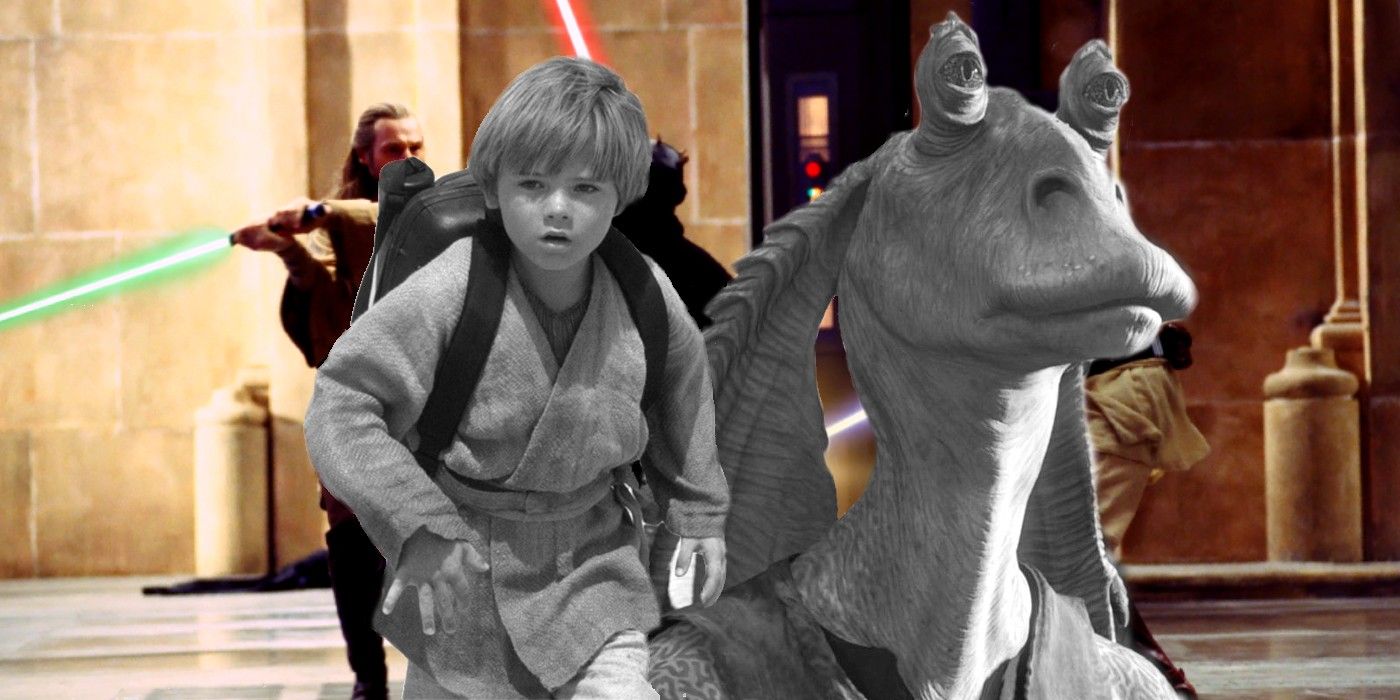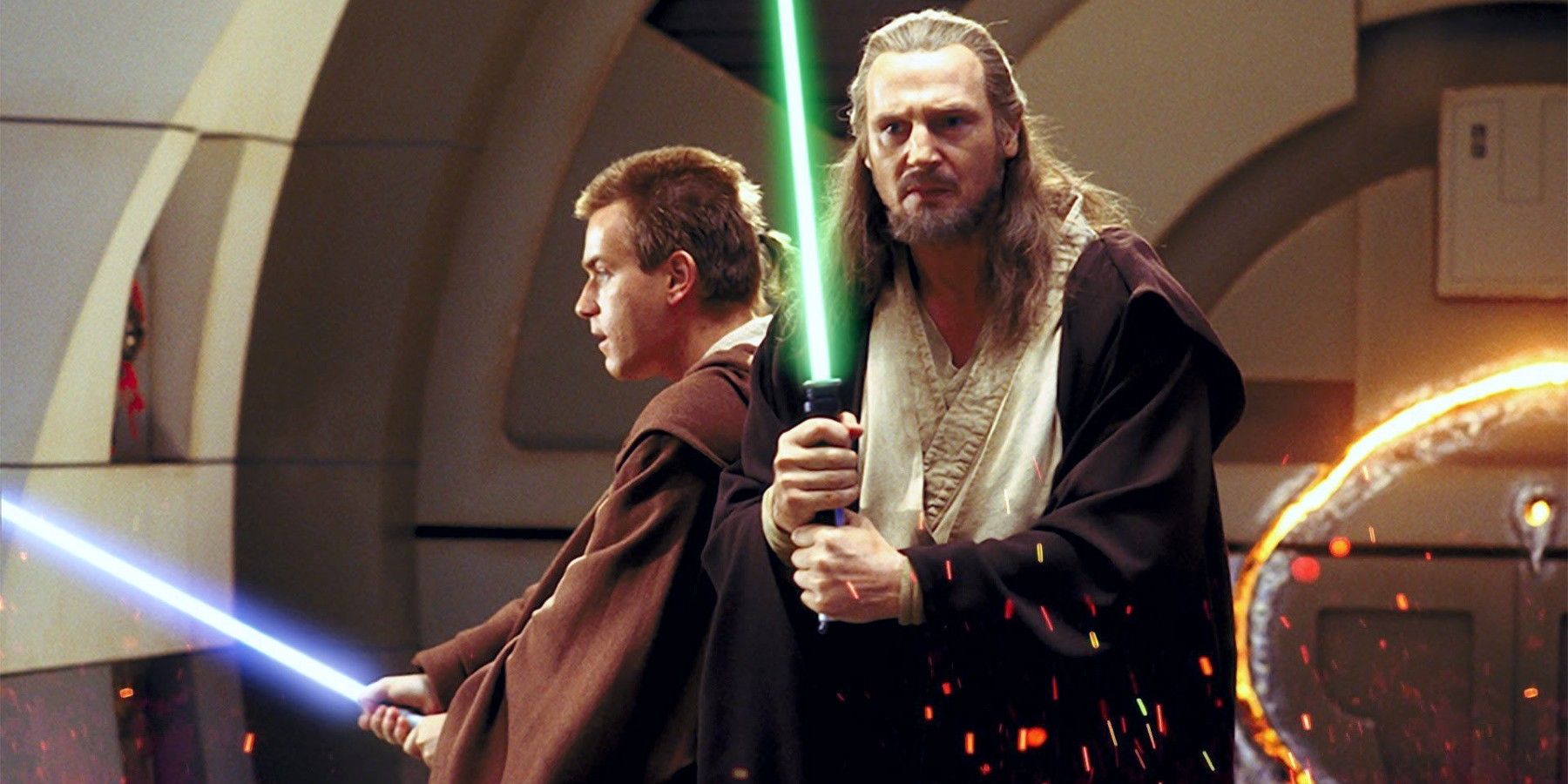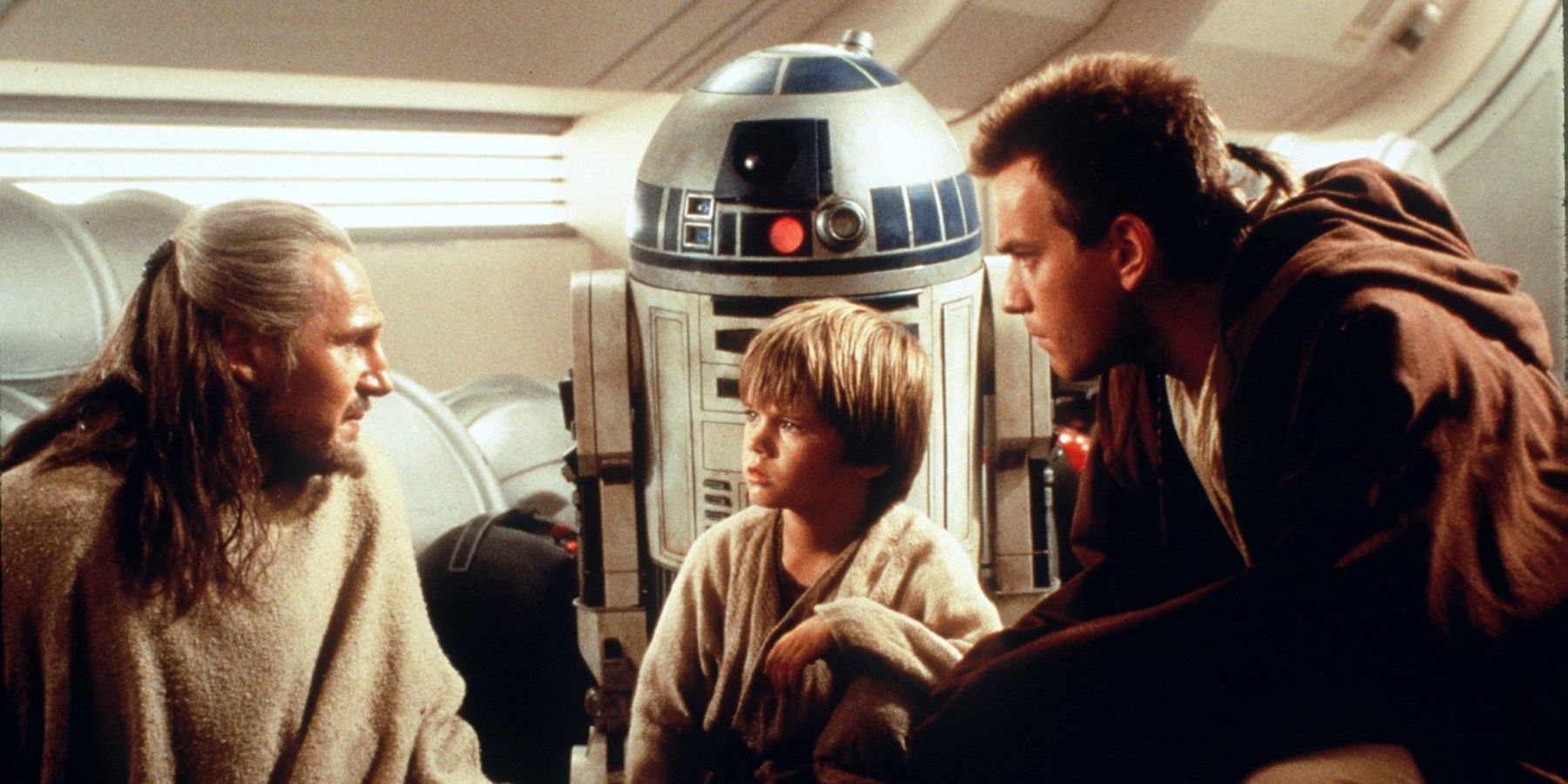
The Star Wars prequels are not everyone’s favorites, but the trilogy has been going through numerous reevaluations in the last years, especially Star Wars: Episode I - The Phantom Menace. However, these reevaluations are missing the biggest problems of the film. The Star Wars saga began its run in 1977 with Star Wars: A New Hope, followed in 1980 by Star Wars: The Empire Strikes Back and Star Wars: Return of the Jedi in 1983, forming what’s collectively known as the “original trilogy”.
Plans for a prequel trilogy began during the outlining of the first two films in the Star Wars saga, but George Lucas abandoned the idea due to the stress of producing the original trilogy. Lucas changed his mind years later thanks to technical advances in the early 1990s that would allow him to create computer-generated imagery – and thus the prequel trilogy happened, this time with Lucas as director of all the films. The trilogy focused on the life of Anakin Skywalker, from his days as a young slave in Tatooine, to his rise as Sith lord Darth Vader.
The first entry in the prequel trilogy, Star Wars: Episode I - The Phantom Menace, was released in 1999, and even though it was a box office success, it wasn’t well received by critics and viewers. But with the Star Wars saga about to end with the upcoming Star Wars: The Rise of Skywalker, and Disney expanding this universe even more since it acquired Lucasfilm, many fans and critics have been revisiting The Phantom Menace and changing their initial opinion about it. However, and as valid as it is to change an opinion, all these reevaluations are ignoring the biggest problems of the film.

Whether Star Wars fans want it or not, the prequels are part of the Skywalker saga, and they’re a very important part as they expanded on Darth Vader’s story as well as Palpatine/Darth Sidious’ – but their relevance doesn’t equal quality. The Phantom Menace was heavily criticized for many reasons (the addition of Jar Jar Binks, the pace of the story, Lucas’ concern over visuals rather than narrative, etc), and Lucas attempted to defend the film by saying it was “for kids”, but that only made it worse. Although Star Wars: Episode III - Revenge of the Sith was better received than the other two, it wasn’t enough for fans to forgive Lucas for what he did with The Phantom Menace, a film that fans had been waiting for for decades. However, the prequels served as an introduction to the Star Wars universe for many, and those who grew up with them are the ones reevaluating them, especially the first one.
Fans whose first approach to the saga happened through The Phantom Menace are now old enough to dominate and impact the conversation in a more powerful way. Those who weren’t into it when the film came out in the late 1990s have had a lot of time to “heal” (it was a sort of betrayal for a lot of people, really), and the film might not look as bad as they remember – or, simply, for nostalgia reasons, they’ve decided to give it another chance. Another reason for the reevaluation of The Phantom Menace is Disney’s Star Wars sequel trilogy. Following the acquisition of Lucasfilm, Disney began working on a new set of films, starting in 2015 with Star Wars: The Force Awakens, followed in 2017 by the most divisive Star Wars film to date – Star Wars: The Last Jedi.
Many fans have chosen to redirect their prequels hate towards the sequel trilogy, prompting them to revisit the prequels to see if they were right in hating them and comparing them to the newest films. Surely, the sequel trilogy is not perfect, and it has received its dose of criticism, but it’s once more a generational issue: those who grew up with the original trilogy criticized the prequels, and those who grew up with the prequels are now not completely on board with the sequels. Besides, the prequels were, for many years, the final chapters in the Star Wars saga, and they weren’t satisfying. The sequel trilogy is now the definitive end, which has earned the prequels the forgiveness of many fans. On the other hand, the sequels, along with the anthology films Rogue One and Solo: A Star Wars Story, have included various nods to the prequels, prompting both old and new fans to take a look at Episodes I,II, and III.
Disney has also done its part in expanding the Star Wars universe beyond films (and, before it, Warner Bros. through the Clone Wars series and film), which has made many people change their mind about the prequels, particularly The Phantom Menace, as there’s now more cohesiveness between all the stories, and they have managed to make the prequels relevant – or, at least, they gave them their rightful place within the history of Star Wars. But seeing the prequels as part of the bigger picture is one thing and reevaluating them individually is a completely different one. As part of a whole, The Phantom Menace might not be bad – but as a film, let alone a Star Wars one, it has some major flaws that those revisiting the film are ignoring, either on purpose or unintentionally.

It took Lucas 16 years to finally decided to move forward with the prequel trilogy, and it was in big part thanks to advancements in technology that finally allowed him to give the Star Wars films the look he always wanted to (and that’s also why fans got the infamous 1997 re-release of the original trilogy). Sadly, Lucas was more focused on making a visually impressive film – which it was, at least back then – than telling a good, well structured story with interesting characters. The result was a film that earned every bad review it got, even if its concept was good.
The overall concept for The Phantom Menace is good: it’s the introduction of the prophecy, young Anakin Skywalker, a corrupted Republic, the presence of the Sith, and more. The execution, however, was very poor. The film jumps from one element to the other and there’s no consistency in it – and this is one case where not even editing can save it. The lack of Marcia Lucas’ involvement in the cutting room floor is a huge difference between the editing and pace of the original trilogy and that of the prequels. Of course, the problems of The Phantom Menace are not just editing – the script is bad. Lucas wrote A New Hope, but the magic present in it didn’t make an appearance in The Phantom Menace. Again, Lucas’ main concern was the visuals, and he exchanged narrative and character development for a bunch of CGI scenarios and characters that were either forgettable, useless, or unnecessary.
There’s also the topic of characters and performances. One of the most criticized elements in The Phantom Menace is Jar Jar Binks (played by Ahmed Best). Considered by many as a merchandising opportunity and by others as a racial stereotype, Jar Jar Binks is one of the most hated characters in the Star Wars universe, so much that his involvement in the following films was smaller – and yet he was, without really knowing it, an important part in the rise of the Empire (which obviously didn’t help him earn popularity points). Young Anakin Skywalker, played by Jake Lloyd, also got a big dose of criticism, with his career ending as consequence. And to be fair, not even Liam Neeson gave a good, let alone memorable, performance, which can be blamed on his character not being well developed.
But even in a case like The Phantom Menace’s, there are some elements that weren’t bad. As always, John Williams’ score was impeccable, the visuals were good (even if they don’t serve a purpose most of the time, aside from showing off what technology could do back then), and Ewan McGregor’s performance as Obi-Wan Kenobi was the most praised. Still, a film as big (on many levels) as The Phantom Menace, and with such history behind it, can’t survive on just three consistently good elements. It’s ok to admit that Star Wars: The Phantom Menace is not the best Star Wars film, the same way it’s ok to admit it has strengths, but if it’s going to be truly reevaluated, every flaw and strength has to be taken into account.
from ScreenRant - Feed https://ift.tt/2PitxG5

0 comments:
Post a Comment